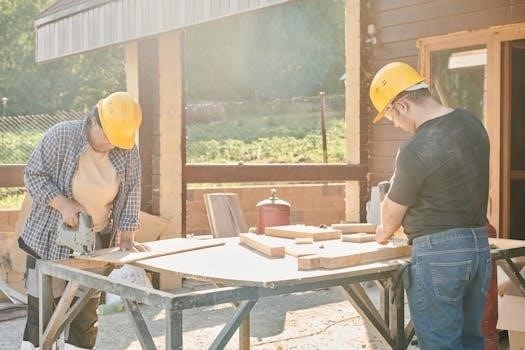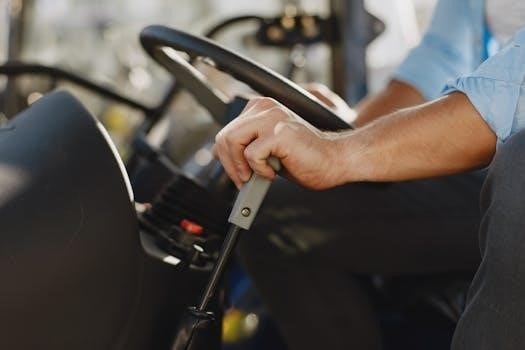Voodoo Lab Pedal Power 2 Plus Manual⁚ A Comprehensive Guide
Welcome to the comprehensive guide for the Voodoo Lab Pedal Power 2 Plus! This manual provides essential information, instructions, and troubleshooting tips․ Created by Digital Music Corporation, this guide covers everything from setup to maintenance, ensuring optimal performance and longevity for your power supply, built for guitar effects․
The Voodoo Lab Pedal Power 2 Plus stands as a premier power supply designed specifically for guitar effects pedals․ Renowned for its reliability and performance, it addresses the critical need for clean, isolated power in pedalboards․ This unit is an essential tool for musicians seeking to eliminate unwanted noise and ensure consistent performance from their effects․
This comprehensive manual will guide you through every aspect of the Pedal Power 2 Plus․ We’ll explore its features, benefits, and how to properly integrate it into your setup․ Understanding the importance of isolated outputs, voltage configurations, and the use of DIP switches is vital for maximizing its potential․ Whether you’re a seasoned professional or a beginner, this guide offers valuable insights into optimizing your pedalboard’s power management․
By delving into the specifics of connecting your pedals, troubleshooting common issues, and implementing noise reduction techniques, you’ll gain the knowledge needed to maintain a pristine signal path․ Additionally, this manual covers maintenance and safety precautions․ Finally, you will be shown where to find the official user manual, promising that you will be able to keep your Pedal Power 2 Plus running smoothly for years to come․
Overview of Features and Benefits
The Voodoo Lab Pedal Power 2 Plus boasts a range of features designed to optimize your pedalboard’s performance․ Its eight isolated outputs eliminate ground loops and interaction between pedals, ensuring a clean and quiet signal․ Each output is designed to deliver consistent power, preventing voltage sag and maintaining the intended tone of your effects․
One key benefit is its versatility․ With various voltage and current configurations, the Pedal Power 2 Plus can accommodate a wide array of pedals, from vintage classics to modern digital effects․ DIP switches allow you to select different voltage options, such as 9V, 12V, or even emulated battery sag, catering to specific pedal requirements․

Noise reduction is another significant advantage․ By isolating each output, the Pedal Power 2 Plus minimizes unwanted hum and interference, resulting in a cleaner and more professional sound․ Its robust construction ensures reliable performance, making it a dependable addition to any pedalboard․ Properly powering your pedals with the Pedal Power 2 Plus preserves their sound, delivering consistent power․ This optimizes your setup, providing years of dependable use, while also creating a professional and clean sound․
Understanding Power Supply Requirements for Effects Pedals
Understanding the power supply requirements of your effects pedals is crucial for optimal performance and longevity․ Different pedals require varying voltages and current draws․ Supplying the incorrect voltage or insufficient current can lead to poor performance, noise, or even damage to your pedals․
Most pedals operate on 9V DC, but some require 12V, 18V, or even 24V․ The current draw, measured in milliamperes (mA), indicates how much power a pedal consumes․ It’s essential to ensure that your power supply can provide enough current for each pedal․ Using a power supply with insufficient current can result in weak or distorted sound․
Digital pedals often require more current than analog pedals․ Overdriving a power supply can lead to heat buildup and potential failure․ Always check the manufacturer’s specifications for each pedal to determine its voltage and current requirements․ Using the correct power supply ensures that your pedals function as intended, providing the best possible sound quality․ It can prevent damage and extend the lifespan of your valuable gear․ Pay attention to polarity – center-positive or center-negative – as incorrect polarity can also damage pedals․ A better understanding of power demands will make the effects work properly and will also prolong their life․
Insulated Outputs and Their Importance
Insulated outputs are a critical feature of high-quality power supplies like the Voodoo Lab Pedal Power 2 Plus․ They provide electrical isolation between each output, preventing ground loops and reducing noise in your signal chain․ Ground loops occur when multiple pieces of equipment are connected to the same ground, creating unwanted current flow and causing hum or buzz․
Insulated outputs eliminate these ground loops by providing a separate ground reference for each pedal․ This ensures that each pedal receives clean, noise-free power, resulting in a clearer and more defined sound․ The Voodoo Lab Pedal Power 2 Plus features eight isolated outputs, allowing you to power multiple pedals without introducing noise into your signal․
This is especially important when using a combination of analog and digital pedals, as digital pedals can often introduce noise into the power supply․ Insulated outputs also help to prevent interaction between pedals․ Some pedals can affect the performance of others when sharing a common power source․ By providing isolated power, each pedal can operate independently and without interference․ Investing in a power supply with insulated outputs is a worthwhile upgrade for any serious guitarist or bassist․ This will ensure that your pedals perform at their best and your signal remains clean and quiet․
Voltage and Current Configurations
Understanding voltage and current configurations is crucial for properly powering your effects pedals with the Voodoo Lab Pedal Power 2 Plus․ Voltage, measured in volts (V), represents the electrical potential difference, while current, measured in milliamperes (mA), indicates the flow of electrical charge․ Effects pedals require specific voltage and current levels to function correctly;
The Pedal Power 2 Plus offers various voltage and current options to accommodate a wide range of pedals․ Most outputs provide 9V DC, the standard voltage for many pedals․ However, some outputs can be configured to provide different voltages, such as 12V DC or even variable voltage options to emulate dying battery effects․
Each output also has a maximum current rating․ Exceeding this rating can damage the power supply or the pedal․ It’s essential to check the power requirements of each pedal before connecting it to the Pedal Power 2 Plus․ The manual specifies the maximum current available on each output․ For pedals that require more current than a single output can provide, you can combine outputs using a current doubler cable․ However, ensure that the combined current does not exceed the Pedal Power 2 Plus’s overall capacity․ Correct voltage and current configurations ensure optimal performance and prevent damage to your valuable effects pedals․
DIP Switches and Their Functions
The Voodoo Lab Pedal Power 2 Plus features DIP switches that allow you to configure the voltage of specific outputs, enhancing its versatility․ These small switches, typically located on the back of the unit, offer different voltage options, catering to various pedal types․ Understanding their functions is key to optimizing your pedalboard’s power․
Each DIP switch corresponds to a specific output on the Pedal Power 2 Plus․ By toggling these switches, you can select different voltage settings․ The most common setting is the standard 9V DC, which powers the majority of pedals; However, some outputs can be switched to 12V DC, accommodating pedals that require higher voltage for optimal performance․
Furthermore, certain DIP switch positions emulate the “sag” effect of a dying battery․ This feature is particularly useful for fuzz and overdrive pedals, as it alters their tone and responsiveness, adding a unique character to your sound․ Consulting the Pedal Power 2 Plus manual is crucial to understanding which DIP switch controls which output and the specific voltage options available․ Experimenting with different DIP switch settings can unlock new sonic possibilities from your pedal collection․ Always ensure the DIP switch settings match the voltage requirements of your pedals to prevent damage․
Connecting Your Pedals⁚ A Step-by-Step Guide
Connecting your pedals to the Voodoo Lab Pedal Power 2 Plus is a straightforward process that ensures stable and noise-free power․ First, identify the power requirements of each pedal․ Check the voltage (typically 9V or 12V DC) and current draw (measured in milliamps, mA) listed on the pedal or in its manual․ Match these requirements to the appropriate outputs on the Pedal Power 2 Plus․
Next, use the provided DC power cables to connect each pedal to an available output․ Ensure the polarity is correct; most pedals use a center-negative polarity․ If a pedal requires more current than a single output provides, you can combine two outputs using a current doubler cable․ However, verify that the combined current does not exceed the Pedal Power 2 Plus’s total output capacity․
Before powering on, double-check all connections to avoid damage․ Once everything is connected, turn on the Pedal Power 2 Plus․ Start with one pedal at a time to confirm each is receiving power correctly․ Organize the cables neatly to prevent noise and ensure easy access for future adjustments․ If you encounter any issues, consult the troubleshooting section of the Voodoo Lab Pedal Power 2 Plus manual for guidance․ Proper connection ensures optimal performance and protects your valuable effects pedals․

Troubleshooting Common Issues
Encountering issues with your Voodoo Lab Pedal Power 2 Plus? Don’t worry; many problems can be easily resolved․ One common issue is pedals not receiving power․ First, verify that the Pedal Power 2 Plus is properly connected to a power source and that the power switch is on․ Next, check each DC cable connection to ensure they are secure․ If a pedal still isn’t powering on, test the cable with another pedal to rule out a faulty cable․
Another frequent problem is excessive noise․ This can often be attributed to ground loops or incorrect voltage settings․ Ensure that all your pedals are using the correct voltage and current; Try isolating each pedal by disconnecting them one at a time to identify the source of the noise․ Using the Pedal Power 2 Plus’s isolated outputs helps minimize ground loops, but sometimes additional steps like using a noise gate pedal may be necessary․
If you experience persistent issues, consult the Voodoo Lab Pedal Power 2 Plus user manual for detailed troubleshooting steps․ It may also be helpful to check online forums or contact Voodoo Lab customer support for expert assistance․ Remember, proper maintenance and careful attention to power requirements can prevent many common problems, ensuring your pedalboard operates smoothly and quietly․
Noise Reduction Techniques
Achieving a noise-free pedalboard setup is crucial for optimal sound quality, and the Voodoo Lab Pedal Power 2 Plus offers several features to help minimize unwanted noise․ One of the most effective techniques is utilizing the isolated outputs․ These outputs prevent ground loops, a common source of hum and buzz, by isolating the power supply for each pedal․ Ensure that sensitive pedals like overdrive and distortion are connected to isolated outputs․
Proper cable management also plays a significant role in noise reduction․ Keep power cables separate from audio cables to prevent interference․ Use high-quality, shielded cables to minimize signal degradation and external noise pickup․ Experiment with different cable arrangements to find the quietest configuration․ If you’re using a daisy chain for certain pedals, ensure they have similar power requirements to avoid voltage fluctuations that can introduce noise․
Additionally, consider the placement of your Pedal Power 2 Plus․ Avoid placing it near other electronic devices or power transformers that could introduce electromagnetic interference․ If noise persists, try using a dedicated power conditioner to filter out any AC line noise․ By implementing these noise reduction techniques, you can significantly improve the clarity and quality of your pedalboard’s sound, ensuring a pristine and professional performance every time․
Using the Pedal Power 2 Plus with Different Pedal Types

The Voodoo Lab Pedal Power 2 Plus is designed to accommodate a wide range of pedal types, from standard 9V effects to more demanding 18V and vintage units․ Understanding the power requirements of each pedal is crucial for optimal performance․ For standard 9V pedals, use the designated 9V outputs, ensuring the current draw does not exceed the output’s capacity․ High-current pedals, such as some digital delays or multi-effects units, may require dedicated outputs capable of delivering higher amperage․
For 18V pedals, utilize the outputs that can be configured to provide 18V by using the appropriate DIP switch settings․ Vintage pedals, particularly those requiring AC voltage, can be powered using the Pedal Power 2 Plus with the correct settings․ Always consult the pedal’s manual to confirm its power requirements before connecting it to the power supply․
Experimenting with different output configurations can also optimize the performance of certain pedals․ Some users find that running certain overdrive or fuzz pedals at slightly lower voltages can alter their tone and responsiveness․ The Pedal Power 2 Plus’s versatile voltage options allow for fine-tuning the power supply to match the specific needs of each pedal, ensuring they operate at their full potential․ Proper matching of voltage and current ensures consistent and reliable operation across diverse pedal setups․

Maintenance and Care
Proper maintenance and care are essential for prolonging the life and performance of your Voodoo Lab Pedal Power 2 Plus․ Regularly inspect the unit for any signs of physical damage, such as frayed power cables or damaged jacks․ Ensure that the unit is kept clean and free from dust, which can accumulate and potentially cause overheating or electrical issues․ Use a dry cloth to gently wipe down the exterior of the unit, avoiding any liquids or harsh chemicals․
Periodically check the power cables and connections to ensure they are secure and free from corrosion․ Loose connections can lead to intermittent power issues or noise in your signal chain․ If you notice any corrosion, clean the affected areas with a contact cleaner specifically designed for electronics․
When not in use, store the Pedal Power 2 Plus in a dry and safe environment, away from extreme temperatures or humidity․ Avoid placing heavy objects on top of the unit, as this can damage the enclosure or internal components․ If you plan to store the unit for an extended period, consider disconnecting it from the power source to prevent any potential electrical surges or issues․ By following these simple maintenance and care tips, you can ensure that your Pedal Power 2 Plus continues to provide reliable and noise-free power to your effects pedals for years to come․
Where to Find the Official User Manual
Safety Precautions
Prioritizing safety is paramount when operating any electrical equipment, including the Voodoo Lab Pedal Power 2 Plus․ Before connecting the unit to a power source, ensure that the voltage matches the specifications indicated on the power supply․ Using an incorrect voltage can cause severe damage to the unit and pose a fire hazard․ Always use a grounded power outlet to prevent electrical shock․
Never attempt to disassemble or repair the Pedal Power 2 Plus yourself․ If you encounter any issues, contact a qualified technician for assistance․ Unauthorized repairs can void the warranty and potentially lead to dangerous situations․ Keep the unit away from water or other liquids, as moisture can cause electrical shorts and pose a risk of electric shock․
Do not overload the power supply by connecting more pedals than it is designed to handle․ Overloading can cause the unit to overheat and potentially fail․ Ensure that all cables are properly connected and in good condition․ Damaged cables can create sparks and pose a fire hazard․ Regularly inspect the power cord for any signs of wear or damage, and replace it immediately if necessary․ By adhering to these safety precautions, you can ensure a safe and reliable operating experience with your Pedal Power 2 Plus․